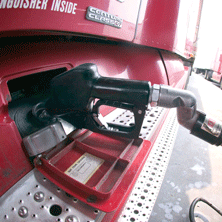 With trucks responsible for moving more than two-thirds of the nation's goods, the industry is inextricably linked to the health of the U.S. economy. In "Truckonomics: An Industry on the Move," associate editor Nancy Condon explores the factors affecting the industry.
With trucks responsible for moving more than two-thirds of the nation's goods, the industry is inextricably linked to the health of the U.S. economy. In "Truckonomics: An Industry on the Move," associate editor Nancy Condon explores the factors affecting the industry.
Given trucking's linkages to the national economy, perhaps it's no surprise that the industry was hit hard by the 2007–09 recession. As demand plummeted, carriers were forced to lower their rates. Many smaller companies failed or were bought by larger companies.
Postrecession, the industry faces a new set of challenges, Condon explains. The consolidation that occurred during the downturn left carriers with a shortage of capacity, and the surviving carriers are operating with an aging fleet. Additionally, the industry faces tougher federal regulations and higher diesel fuel prices.
Constrained capacity has an upside for the industry, however. It's as simple as the law of supply and demand: “Tonnage is up, capacity is down, and so trucking companies have the pricing power to raise their rates,” Condon writes. Though, the industry's recovery ultimately hinges on overall economic performance, she concludes.
To read more about how the industry has responded to recent challenges, see the full story in the second quarter issue of EconSouth. Also, don't miss the EconSouth Now podcast featuring a discussion with Oscar Horton, owner and president of truck dealership Sun State International.


